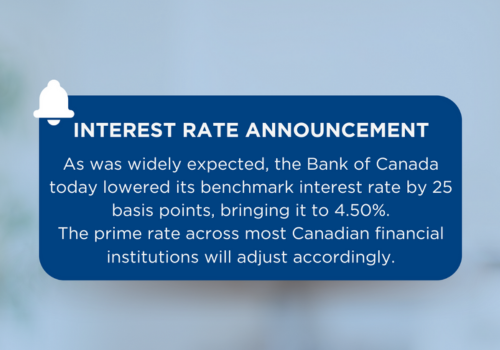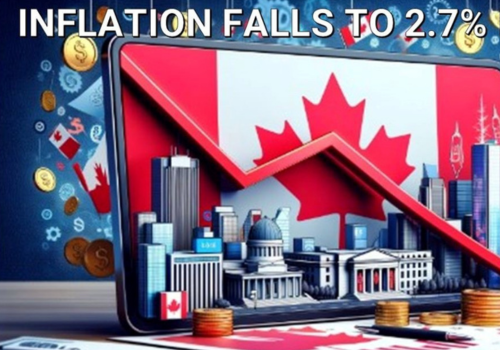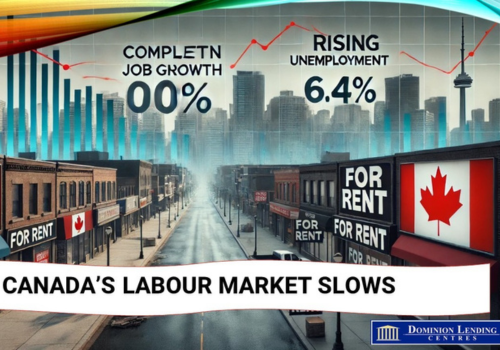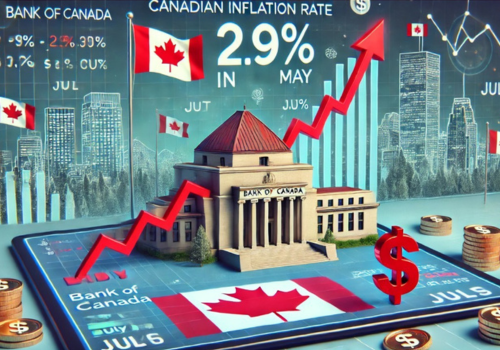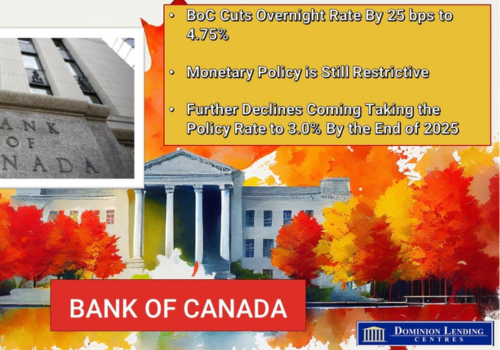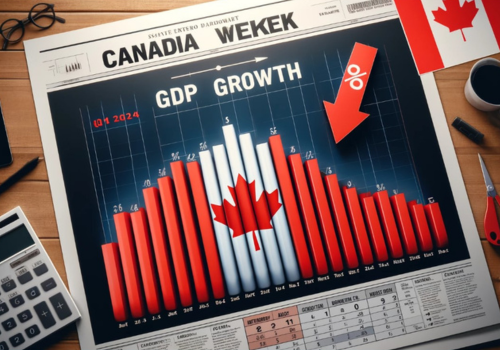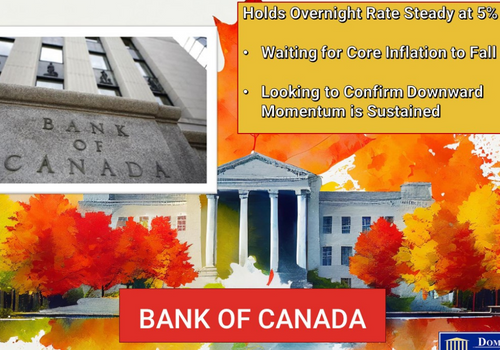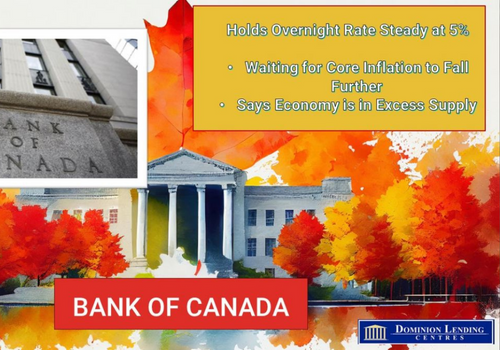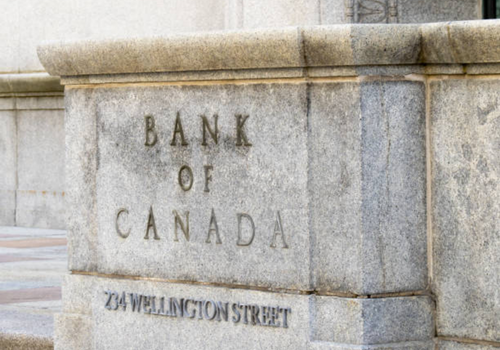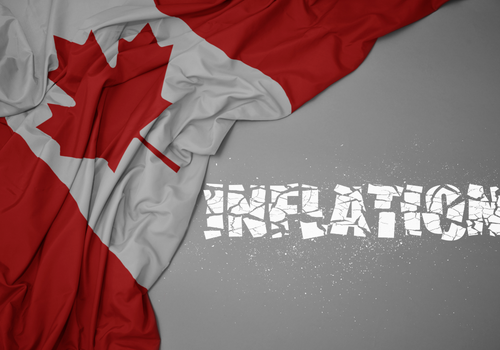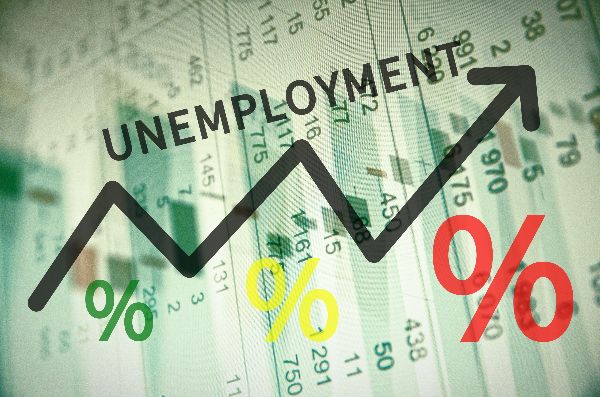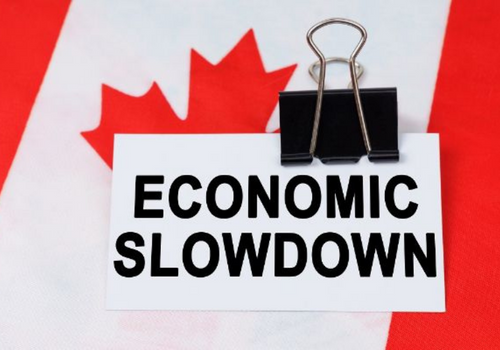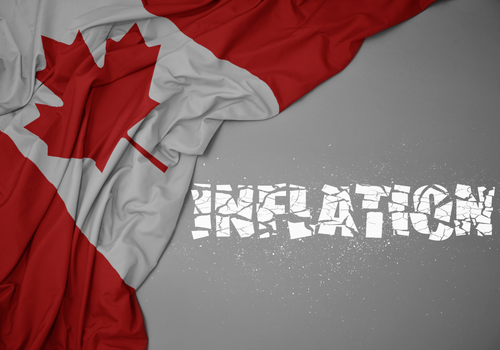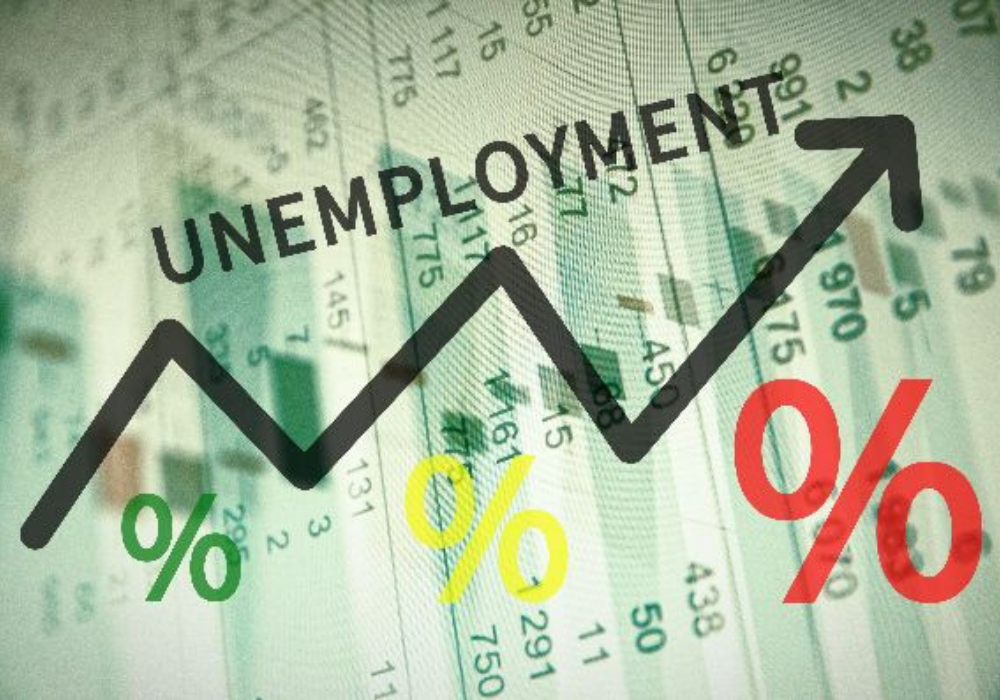Blog
streamlined • secure • remote
Category: Latest News (109 posts)
Economic Insights from Dr. Sherry Cooper - July 1 2025
July 1, 2025 | Posted by: Matthew J. Charlton
Canadian economic data have come in weaker than expected since early May. Despite this, markets are not looking for another rate cut in July unless core inflation falls meaningfully. Amid a sizeable ...
read moreResidential Market Commentary - Bank of Canada balancing act - June 30 2025
June 30, 2025 | Posted by: Matthew J. Charlton
Expert opinions on Bank of Canada interest rate cuts are shifting. A growing number of market watchers are backing away from their predictions of two more reductions this year. Several are now sayi ...
read moreCanadian GDP is Set To Contract In Q2 - June 27 2025
June 27, 2025 | Posted by: Matthew J. Charlton
Canada Is Headed For A Moderate Economic Contraction in Q2 Real gross domestic product (GDP) edged down 0.1% in April, following a 0.2% increase in March. The preliminary estimate for May was also ...
read moreCanadian CPI inflation held steady at 1.7% y/y in May. Core inflation edged downward - June 24 2025
June 24, 2025 | Posted by: Matthew J. Charlton
Today's Report Shows Inflation Remains a Concern The Consumer Price Index (CPI) rose 1.7% year-over-year in May, matching the 1.7% increase in April.A reduced rent price increase and a decline in tra ...
read moreResidential Market Commentary - Renters Retreat From the Market
June 23, 2025 | Posted by: Matthew J. Charlton
A key segment of Canada’s first-time homebuyer market appears to be delaying its purchasing plans. A new survey by real estate giant Royal LePage suggests renters are holding back, waiting fo ...
read moreCanadian National Home Sales Were Up 3.6% Month-over-Month - June 16 2025
June 16, 2025 | Posted by: Matthew J. Charlton
Global Tariff Uncertainty Sidelines Buyers Canadian existing home sales recorded over the MLS Systems climbed 3.6% between April and May, a normally strong month for housing, marking the first gain ...
read moreResidential Market Commentary - BoC holds rate steady – June 9 2025
June 9, 2025 | Posted by: Matthew J. Charlton
The Bank of Canada has stayed on the sidelines for its second rate setting in a row, so Canadians hoping for some interest rate relief are going to have to wait a little longer. The central bank&rs ...
read moreWeak Canadian Labour Report in May Points Towards BoC Easing - June 6 2025
June 6, 2025 | Posted by: Matthew J. Charlton
Labour Market Weakness Continued in May, Raising the Prospects of a Rate Cut at The Next BoC Meeting Today's Labour Force Survey for March was weaker than expected. Employment decreased by 33,000 (-0 ...
read moreBank of Canada Holds Rates Steady for Second Consecutive Meeting - June 4 2025
June 4, 2025 | Posted by: Matthew J. Charlton
Bank of Canada Holds Rates Steady for the Second Consecutive Meeting--But Two More Rate Cuts Are Likely This Year As expected, the Bank of Canada held its benchmark interest rate unchanged at 2.75% ...
read moreInterest Rate Announcement - June 4 2025
June 4, 2025 | Posted by: Matthew J. Charlton
As expected, the Bank of Canada left its policy rate unchanged at 2.75%.The next rate announcement is scheduled for Wednesday, July 30 2025.'We understand the challenges the Bank of Canada is currentl ...
read moreEconomic Insights from Dr. Sherry Cooper - June 3 2025
June 3, 2025 | Posted by: Matthew J. Charlton
The Trump Tariff Mayhem Has Significantly Impacted the Canadian Economy and Financial Markets. Since the February tariff threats and the on-again, off-again nature of the policy changes, consumer an ...
read moreQ1 Canadian GDP Comes In Stronger Than Expected Owing to Tariffs - June 2 2025
June 2, 2025 | Posted by: Matthew J. Charlton
Q1 GDP Growth Was Bolstered by Tariff Reaction As Residential Construction and Resale Activity Weakened Further Statistics Canada released Q1 GDP data showing a stronger-than-expected 2.2% seasonal ...
read moreCanadian headline inflation fell to 1.7% y/y in April owing to end of carbon tax and falling energy prices - May 20 2025
May 20, 2025 | Posted by: Matthew J. Charlton
Today's Inflation Report Poses a Conundrum for the Bank of Canada The headline inflation report for April showed a marked slowdown in the Consumer Price Index (CPI), which rose a mere 1.7% year over ...
read moreCanadian National Home Sales Unchanged In April As New Listings and Home Prices Fall - May 16 2025
May 16, 2025 | Posted by: Matthew J. Charlton
Global Tariff Uncertainty Sidelined Buyers Canadian existing home sales were unchanged last month as tariff concerns again mothballed home-buying intentions, mainly in the GTA and GVA where sales h ...
read moreInside Carney’s Cabinet - May 13 2025
May 13, 2025 | Posted by: Matthew J. Charlton
Prime Minister Mark Carney unveiled his first Cabinet since winning the general election, and his second since becoming Liberal Leader. Today’s Cabinet announcement marks an important mileston ...
read moreWeak Canadian Jobs Report for April As Tariffs Hit Manufacturing - May 9 2025
May 9, 2025 | Posted by: Matthew J. Charlton
Manufacturing Employment Plunged as Tariffs Weakened the Economy Today's Labour Force Survey for April showed a marked adverse impact of tariffs on the Canadian economy. Early evidence suggests that ...
read moreEconomic Insights from Dr. Sherry Cooper - May 6 2025
May 6, 2025 | Posted by: Matthew J. Charlton
President Trump’s second term, now just over 100 days long, has wreaked chaos worldwide. A selloff in US assets deepened as President Donald Trump stepped up criticism of Jerome Powell, Chairm ...
read moreResidential Market Commentary - New government faces old housing issues - April 29 2025
April 29, 2025 | Posted by: Matthew J. Charlton
The federal election is done and we now know what the government will look like for the foreseeable future. Among the key promises made during the election campaign were pledges to fix the country&r ...
read moreThe Bank of Canada holds rates steady in the face of tariff uncertainty - April 16 2025
April 16, 2025 | Posted by: Matthew J. Charlton
Bank of Canada Holds Rates Steady In The Face Of Tariff Uncertainty--More Rate Cuts Coming The Bank of Canada held its benchmark interest rate unchanged at 2.75% at today's meeting, as expected by ...
read moreInterest Rate Announcement - April 16 2025
April 16, 2025 | Posted by: Matthew J. Charlton
The Bank of Canada has left its benchmark rate unchanged at 2.75%The next rate announcement is scheduled for Wednesday, June 4, 2025.'The Bank of Canada faced a tough decision with the economic turbul ...
read moreLower-than-expected Canadian inflation in March may not be enough to prompt another Bank of Canada rate cut tomorrow - April 15 2025
April 15, 2025 | Posted by: Matthew J. Charlton
Weaker Than Expected Inflation May Not Be Enough to Trigger Another Bank of Canada Rate Cut Tomorrow Canadian consumer prices rose 0.3% in March (or remained flat when seasonally adjusted), which w ...
read moreWeak Canadian Job Creation Is The First Fallout From The Trade War - April 4 2025
April 4, 2025 | Posted by: Matthew J. Charlton
Weak Canadian Job Growth in March and Rising Unemployment Is the First Harbinger of a Trade-War-Induced Economic Slowdown Today's Labour Force Survey for March was weaker than expected. Employment ...
read moreEconomic Insights from Dr. Sherry Cooper - April 1 2025
April 1, 2025 | Posted by: Matthew J. Charlton
Since Donald Trump took office, all bets are off on the Canadian economic outlook. Most people expected more substantial growth and lower inflation as we moved into 2025. Trump’s tariffs, dere ...
read moreCanadian Inflation Jumped to 2.6% y/y in February As GST Tax Holiday Ended - March 18 2025
March 18, 2025 | Posted by: Matthew J. Charlton
Canadian Inflation Surged to 2.6% in February, Much Stronger Than Expected The Consumer Price Index (CPI) rose 2.6% year-over-year (y/y) in February, following an increase of 1.9% in January. With ...
read moreCanadian home sales plunged in February, spooked by tariff concerns - March 17 2025
March 17, 2025 | Posted by: Matthew J. Charlton
Global Tariff Uncertainty Sidelined Buyers Canadian existing home sales plunged last month as tariff concerns moth-balled home buying intentions. According to data released Monday by the Canadian R ...
read moreThe Bank of Canada Cut Rates by 25 bps On Tariff Concerns - March 12 2025
March 12, 2025 | Posted by: Matthew J. Charlton
Bank of Canada Cuts Policy Rate By Another 25 Basis Points The Bank of Canada (BoC) reduced the overnight rate by 25 basis points this morning, bringing the policy rate down to 2.75%, within the ne ...
read moreInterest Rate Announcement - March 12 2025
March 12, 2025 | Posted by: Matthew J. Charlton
The Bank of Canada has lowered its benchmark rate by 25 bps, bringing it to 2.75%. This is the Bank’s seventh consecutive rate cut.The next rate announcement is scheduled for Wednesday, April 16 ...
read moreCanadian Job Growth Stalls in February - March 7 2025
March 7, 2025 | Posted by: Matthew J. Charlton
Weak Canadian Job Creation Opens The Way For BoC Easing Next Week Today's Labour Force Survey for February was weaker than expected, showing de minimis job growth last month. Employment held steady ...
read moreTrump did it--the trade war started at midnight. Stocks and currencies are falling, but so are interest rates. - March 4 2025
March 4, 2025 | Posted by: Matthew J. Charlton
Trump Did It--Trade War Starts Today Trump has imposed tariffs of 25% on goods coming from Mexico and Canada, 10% on Canadian energy, and an additional 10% on goods from China. He justified these ac ...
read moreCanadian GDP Growth Accelerated in Q4 to 2.6% Compared to an Upwardly Revised 2.2% in Q3 - February 28 2025
February 28, 2025 | Posted by: Matthew J. Charlton
Canada Finished 2024 on a Stronger Note, But Tariffs Remain a Concern This morning, Statistics Canada released the GDP data for the final quarter of last year, showing a stronger-than-expected incre ...
read moreCanadian New Listings Surged in January as Tariff Uncertainty Weighed on Sales - February 19 2025
February 19, 2025 | Posted by: Matthew J. Charlton
Global Tariff Uncertainty Is Not Good For the Canadian Housing Market Canadian MLS® Systems posted a double-digit jump in new supply in January 2025 when compared to December 2024. At the same ...
read moreCanadian CPI Inflation Edged Upward in January Owing To Rising Energy Prices - February 18 2025
February 18, 2025 | Posted by: Matthew J. Charlton
Canadian Inflation Edged Upward to 1.9% Y/Y in January In January, the Consumer Price Index (CPI) rose by 1.9% year over year (y/y), up from 1.8% in December. This rise was primarily due to an upti ...
read moreRE/MAX Partners with Dominion Lending Centres Inc.
February 13, 2025 | Posted by: Matthew J. Charlton
RE/MAX Canada is pleased to announce a new partnership with Dominion Lending Centres (DLC), one of Canada’s largest and most recognized mortgage brokerage brands. This collaboration will creat ...
read moreCanada's January Unemployment Rate Fell to 6.6% On Stronger-Than-Expected Job Growth - February 7 2025
February 7, 2025 | Posted by: Matthew J. Charlton
Stronger-Than-Expected Jobs Report in January Today's Labour Force Survey for January surprised on the high side as businesses expanded employment despite threats of a tariff war with the US. Accor ...
read moreEconomic Insights from Dr. Sherry Cooper - February 4 2025
February 4, 2025 | Posted by: Matthew J. Charlton
Wall Street reacted positively to Trump’s initial tariff backpedalling, pushing US equity futures higher. This is a sign that he may pursue a less protectionist approach; for now, it is a boon ...
read moreTrump Tariff Policy Blasted Around the World - February 3 2025
February 3, 2025 | Posted by: Matthew J. Charlton
Noone Benefits From Tariffs Despite having negotiated the current trade agreement among the U.S., Mexico, and Canada during his first administration, Donald Trump broke the terms of that treaty on ...
read moreThe Bank of Canada Cuts The Overnight Rate By 25 Bps - January 29 2025
January 29, 2025 | Posted by: Matthew J. Charlton
Bank of Canada Cuts Policy Rate By 25 Basis Points The Bank of Canada (BoC) reduced the overnight rate by 25 basis points this morning, bringing the policy rate down to 3.0%. The market had anticip ...
read moreInterest Rate Announcement - January 29 2025
January 29, 2025 | Posted by: Matthew J. Charlton
The Bank of Canada has lowered its benchmark interest rate by 25 bps to 3.00% This is the Bank’s sixth consecutive rate cut.The next rate announcement is scheduled for Wednesday, March 12, 2025. ...
read moreCanadian Inflation Falls to 1.8% y/y in December - January 21 2025
January 21, 2025 | Posted by: Matthew J. Charlton
Positive News On The Inflation Front The Consumer Price Index (CPI) increased by 1.8% year-over-year in December, a slight decrease from the 1.9% rise in November. The main contributors to this slo ...
read moreImpact of Trump Tariffs On Canadian Housing Activity - January 20 2025
January 20, 2025 | Posted by: Matthew J. Charlton
The Impact of Tariffs on Canadian Housing Markets Today is President Trump's inauguration day in the US, and contrary to earlier threats, officials have announced that he will not impose new tariffs ...
read moreMarket Outlook for 2025
January 16, 2025 | Posted by: Matthew J. Charlton
As we begin a new year and gear up for the Spring season, it’s the perfect time to explore the 2025 market outlook. Here’s what to expect for housing sales, prices, interest rates, and th ...
read moreCanadian Existing Home Sales Edged Downward in December - January 15 2025
January 15, 2025 | Posted by: Matthew J. Charlton
The Canadian Housing Market Ends 2024 On a Weak Note Home sales activity recorded over Canadian MLS® Systems softened in December, falling 5.8% compared to November. However, they were still 13 ...
read moreStrongest Canadian Employment Report In Nearly Two Years - January 10 2025
January 10, 2025 | Posted by: Matthew J. Charlton
Stronger-Than-Expected Jobs Report in December Today’s Labour Force Survey for December was much stronger than expected, as many thought the Canada Post strike would have a larger impact. Emp ...
read more2024 Mid-Year Consumer Survey Results - December 20 2024
December 20, 2024 | Posted by: Matthew J. Charlton
The 2024 Mid-Year Report from Mortgage Professionals Canada provides key insights into the current housing market and consumer sentiments: Renewed Optimism Amidst Concerns: Falling interest rates ha ...
read moreCanadian Headline Inflation Was 1.9% y/y With Monthly Inflation Unchanged - December 18 2024
December 18, 2024 | Posted by: Matthew J. Charlton
Good News On The Inflation Front The Consumer Price Index (CPI) rose 1.9% year-over-year (y/y) in November, down from a 2.0% increase in October. Slower price growth was broad-based, with prices for ...
read moreCanadian home sales rose again in November as new listings declined and prices rose - December 17 2024
December 17, 2024 | Posted by: Matthew J. Charlton
The Canadian Housing Market Strengthens Further Home sales activity recorded over Canadian MLS® Systems rose again in November, building on October’s surprise jump. Sales were up 2.8% m/m ...
read moreFall Economic Statement Delivered Despite Chrystia Freeland's Resignation - December 16 2024
December 16, 2024 | Posted by: Matthew J. Charlton
Chrystia Freeland Resigns On The Day of The Fall Economic Statement Finance Minister Freeland rocked markets today by submitting her resignation from Cabinet. Trudeau had asked her to take another ...
read moreThe Bank of Canada Cuts Its Policy Rate By Another 50 Basis Points - December 11 2024
December 11, 2024 | Posted by: Matthew J. Charlton
The Surge In Canadian Unemployment Keeps Another Jumbo Rate Cut In Play In December The BoC slashed the overnight rate by 50 bps this morning, bringing the policy rate down to 3.25%. The market had ...
read moreInterest Rate Announcement - December 11 2024
December 11, 2024 | Posted by: Matthew J. Charlton
The Bank of Canada has lowered its benchmark rate by 50 bps, bringing it down to 3.25%. This marks the fifth consecutive cut since June. 'The Bank of Canada's decision to lower the interest policy rat ...
read moreNovember Jobless Rate Surges to 6.8% in Canada Despite Strong Jobs Growth - December 6 2024
December 6, 2024 | Posted by: Matthew J. Charlton
The Surge In Canadian Unemployment Keeps Another Jumbo Rate Cut In Play In December Before the release of today's Canadian Labour Force Data, the odds favoured a 25 basis point drop in the overnigh ...
read moreEconomic Insights from Dr. Sherry Cooper - December 3 2024
December 3, 2024 | Posted by: Matthew J. Charlton
There is an unprecedented disparity between the economic and financial situation in the US and Canada. The Canadian economy is far more interest-sensitive than the US and, therefore, slowed more dra ...
read moreCanadian Inflation increased to 2.0% y/y in October--up from 1.6% in September owing to a smaller decline in gasoline prices - November 19 2024
November 19, 2024 | Posted by: Matthew J. Charlton
October Inflation Rose to 2.0% As Gasoline Price Declines Were More Muted The Consumer Price Index (CPI) rose 2.0% year-over-year in October, up from a 1.6% increase in September. Gasoline prices fel ...
read moreCanadian Home Sales Surge in October Led by the GVA and GTA - November 15 2024
November 15, 2024 | Posted by: Matthew J. Charlton
The Canadian Housing Market Shows Signs of Life Canadian home sales surged to their highest level in more than two years as the Bank of Canada cut interest rates, bringing buyers back into the mark ...
read moreCanadian Weak Job Gains in October Keeps Jumbo Rate Cut In Play - November 8 2024
November 8, 2024 | Posted by: Matthew J. Charlton
Weaker-Than-Expected October Jobs Report Keeps Jumbo Rate Cut In-Play in December Statistics Canada released October employment data today. The data showed a marked slowdown in job growth, undersco ...
read moreJumbo Rate Cut by the Bank of Canada - October 23 2024
October 23, 2024 | Posted by: Matthew J. Charlton
Bank of Canada Cuts Policy Rate By 50 BPs After three consecutive 25 bp rate cuts, the BoC slashed the overnight rate by 50 bps this morning, bringing the policy rate down to 3.75%. The market had ...
read moreInterest Rate Announcement - October 23 2024
October 23, 2024 | Posted by: Matthew J. Charlton
The Bank of Canada has lowered its benchmark rate by 50 bps, bringing it down to 3.75%. This marks the fourth consecutive cut since June.'The Bank of Canada's decision to lower the interest rate to 3. ...
read moreHome sales have trended up since rate cuts began, but new listings have risen faster - October 17 2024
October 17, 2024 | Posted by: Matthew J. Charlton
Canadian Housing Market Stuck In A Holding Pattern Following the Bank of Canada’s third interest rate cut of the year, national home sales increased slightly in September compared to August. ...
read moreCanadian inflation fell to 1.6% y/y in September, the smallest yearly increase since 2021 - October 16 2024
October 16, 2024 | Posted by: Matthew J. Charlton
More Good News On The Canadian Inflation Front The Consumer Price Index (CPI) rose 1.6% year over year in September, the slowest pace since February 2021 and down from a 2.0% gain in August 2024. The ...
read moreStronger Than Expected Canadian Jobs Report for September Reduces the Chances of a 50-bp Rate Cut on October 23 - October 15 2024
October 15, 2024 | Posted by: Matthew J. Charlton
Stronger-Than-Expected September Jobs Report Reduces Prospect Of Larger Rate Cuts Statistics Canada released September employment data recently, showing a marked uptick in job growth and the first de ...
read moreEconomic Insights from Dr. Sherry Cooper - October 2 2024
October 2, 2024 | Posted by: Matthew J. Charlton
Two significant developments in September will have a lasting positive impact on Canadian housing activity. First were Ottawa’s measures to make housing more affordable. Second was the Fed&rsq ...
read moreGreat News On the Canadian Inflation Front in August - September 17 2024
September 17, 2024 | Posted by: Matthew J. Charlton
More Good News On The Canadian Inflation Front The Consumer Price Index (CPI) rose 2.0% year over year in August, the slowest pace since February 2021, and down from a 2.5% gain in July 2024. Core in ...
read moreAugust Housing Activity Flat Despite Rate Cuts - September 17 2024
September 17, 2024 | Posted by: Matthew J. Charlton
Canadian Housing Market Stuck In A Holding Pattern National home sales increased in June following the Bank of Canada’s first interest rate cut since 2020, and activity posted another slight ...
read moreWeak Canadian Labour Force Survey Sets The Stage For Further Rate Cuts - September 6 2024
September 6, 2024 | Posted by: Matthew J. Charlton
Weaker-Than-Expected August Jobs Report Raises Prospect Of Larger Rate Cuts Statistics Canada released August employment data today, showing continued growth in excess supply in labour markets nation ...
read moreBank of Canada Cuts Policy Rate By 25 bps to 4.25% - September 4 2024
September 4, 2024 | Posted by: Matthew J. Charlton
Bank of Canada Cuts Rates Another Quarter Point Today, the Bank of Canada cut the overnight policy rate by another 25 basis points to 4.25%. This is the third consecutive decrease since June. The B ...
read moreInterest Rate Announcement - September 4 2024
September 4, 2024 | Posted by: Matthew J. Charlton
As was widely expected, the Bank of Canada today lowered its benchmark interest rate by 25 bps, bringing it to 4.25%. This is the Bank’s third consecutive rate cut following a previous cut in Ju ...
read moreEconomic Insights from Dr. Sherry Cooper - September 3 2024
September 3, 2024 | Posted by: Matthew J. Charlton
As the Bank of Canada cuts interest rates, housing activity has remained relatively weak. Existing home sales were well below historical averages in July, while new listings edged upward. Prices hav ...
read moreCanadian Q2 Real GDP Growth A Bit Stronger Than Expected, But Per Capita Real GDP Falls for The Fifth Consecutive Quarter - August 30 2024
August 30, 2024 | Posted by: Matthew J. Charlton
Q2 Canadian Growth, Boosted By Record Population Gains, Slows In June And July Canada's economy grew a bit more than expected in the second quarter, but falling per-capita gross domestic product an ...
read moreCanadian Inflation Cools to 2.5% y/y in July, Ensuring BoC Rate Cut on Sept 4 - August 20 2024
August 20, 2024 | Posted by: Matthew J. Charlton
More Good News On The Canadian Inflation Front Inflation in Canada decelerated once again in July to its slowest pace in three years, assuring the central bank will cut rates for the third consecutiv ...
read moreCanadian Housing Market On Pause In July - August 15 2024
August 15, 2024 | Posted by: Matthew J. Charlton
Canadian Housing Market Paused In July Despite the continued decline in interest rates, the Canadian housing market saw summer doldrums last month. The Canadian Real Estate Association (CREA) annou ...
read moreCanadian Employment Growth Stalled In July, While the Jobless Rate Held Steady at 6.4% – August 9 2024
August 9, 2024 | Posted by: Matthew J. Charlton
Weaker-Than-Expected July Jobs Report Keeps BoC Rate Cuts In-Play Canadian employment data, released today by Statistics Canada, showed a continued slowdown, which historically would have been a harb ...
read moreEconomic Insights from Dr. Sherry Cooper
August 2, 2024 | Posted by: Matthew J. Charlton
Bank of Canada Rate Cut: Economic Trends and Housing Market Predictions All eyes were on The Bank of Canada last month as they cut interest rates by 25 basis points again during their July 24th meeti ...
read moreInterest Rate Announcement – July 24 2024
July 24, 2024 | Posted by: Matthew J. Charlton
In its statement, the Bank said, price pressures are “continuing to ease” and that inflation is expected to move closer to 2%. It cautioned that price pressures remain in some parts of the ...
read moreCanadian Inflation Decelerates to 2.7% – July 16 2024
July 16, 2024 | Posted by: Matthew J. Charlton
Canadian Inflation Fell in June, Setting the Stage For BoC Rate Cut Inflation unexpectedly slipped 0.1% (not seasonally adjusted) in June, following a 0.6% increase in May. This was the first decline ...
read moreJune Home Sales In Canada Show Early Signs Of A Pick-Up After BoC Easing – July 12 2024
July 12, 2024 | Posted by: Matthew J. Charlton
Early Signs Of Renewed Life In June Housing Markets The Canadian Real Estate Association (CREA) announced today that national home sales rose 3.7% between May and June following the Bank of Canada& ...
read moreWeaker-than-expected Jobs Report Keeps Further BoC Rate Cuts In Play – July 5 2024
July 5, 2024 | Posted by: Matthew J. Charlton
Weaker-Than-Expected June Jobs Report Keeps BoC Rate Cuts In Play Canadian employment data, released today by Statistics Canada, showed a marked slowdown, which historically would have been a harbing ...
read moreCanadian CPI Inflation Rose in May, Reducing the Chances of a July Rate Cut – June 25 2024
June 25, 2024 | Posted by: Matthew J. Charlton
Canadian Inflation Rose In May, Surprising Markets Inflation unexpectedly rose in May, disappointing the Bank of Canada as it deliberates the possibility of another rate cut next month. The Consume ...
read moreCanadian Housing Market Was Quiet In May – June 17 2024
June 17, 2024 | Posted by: Matthew J. Charlton
May Was Another Sleepy Month For Housing The Canadian Real Estate Association (CREA) announced today that national home sales fell 0.6% in May, remaining slightly below the average of the past ten ...
read moreMay employment growth in Canada stalled as the unemployment rate ticked up to 6.2% – June 7 2024
June 7, 2024 | Posted by: Matthew J. Charlton
May Jobs Report In the first major data release since the Bank of Canada cut interest rates on Wednesday, Statistics Canada Labour Force Survey for May showed a marked slowdown from the April surge. ...
read moreBank of Canada Cuts Overnight Rate 25 bps to 4.75% – June 6 2024
June 6, 2024 | Posted by: Matthew J. Charlton
A Collective Sigh of Relief As The BoC Cut Rates For the First Time in 27 Months The Bank of Canada boosted consumer and business confidence by cutting the overnight rate by 25 bps to 4.75% and pledg ...
read moreWeaker-than-expected Canadian Q1’24 GDP Growth Increases Odds of a Rate Cut Next Week – May 31 2024
May 31, 2024 | Posted by: Matthew J. Charlton
Odds of a Rate Cut Next Week Rise with Disappointed Canadian GDP Growth The likelihood of a rate cut next week has increased due to disappointing Canadian GDP growth. Real gross domestic product (GDP ...
read moreCanadian CPI Inflation Eased In April, Raising the Chances of a June Rate Cut – May 21 2024
May 21, 2024 | Posted by: Matthew J. Charlton
Canadian Inflation Eased Again in April, Raising the Chances of a June Rate Cut The Consumer Price Index (CPI) rose 2.7% year-over-year (y/y) in April, down from 2.9% in March. This marks the fourth ...
read moreCanadian Home Buyers Remain On the Sidelines In April As New Listings Surge – May 15 2024
May 15, 2024 | Posted by: Matthew J. Charlton
Homebuyers Cautious As New Listings Surge In April The Canadian Real Estate Association (CREA) announced today that national home sales dipped in April 2024 from its prior month, as the number of pro ...
read moreApril Jobs Report Much Stronger Than Expected – May 10 2024
May 10, 2024 | Posted by: Matthew J. Charlton
April’s Strong Job Gains Likely Postpone Rate Cuts Until July Today’s StatsCanada Labour Force Survey for April blindsided economists by coming in much more robust than expected. Employme ...
read moreCanadian Federal Budget 2024: Higher Deficits, Higher Government Spending, And Higher Taxes for the Wealthy – April 17 2024
April 17, 2024 | Posted by: Matthew J. Charlton
Federal Budget Targets Rich Canadians For New Spending The budget focuses on helping Millennial and Gen Z voters experiencing rising housing costs and other inflationary pressures. The government has ...
read moreGreat News On The Canadian Inflation Front – April 16 2024
April 16, 2024 | Posted by: Matthew J. Charlton
Great News On The Inflation Front The Consumer Price Index (CPI) rose 2.9% year-over-year in March, as expected, up a tick from the February pace owing to a rise in gasoline prices, as prices at the ...
read moreHo Hum Housing Data In March Provides Hints Of Coming Strength In Spring – April 12 2024
April 12, 2024 | Posted by: Matthew J. Charlton
Recent Signs Show Housing Activity Will Strengthen Meaningfully In April The Canadian Real Estate Association (CREA) announced today that national home sales for March were roughly flat, while new li ...
read moreBank of Canada Holds Rates Steady For Sixth Consecutive Meeting – April 10 2024
April 10, 2024 | Posted by: Matthew J. Charlton
The Bank of Canada Cautious, But A Rate Cut In June Is Possible Today, the Bank of Canada held the overnight rate at 5% for the sixth consecutive meeting and pledged to continue normalizing its balan ...
read moreCanadian Job Market Whimpers in March While US Roars – April 5 2024
April 5, 2024 | Posted by: Matthew J. Charlton
March’s Weak Jobs Report Sets The Stage For A June Rate Cut Today’s StatsCanada Labour Force Survey for March is much weaker than expected. Employment fell by 2,200, and the employment ra ...
read moreGreat News On The Canadian Inflation Front – March 19 2024
March 19, 2024 | Posted by: Matthew J. Charlton
Great News On The Inflation Front The Consumer Price Index (CPI) rose 2.8% year-over-year in February, down from the 2.9% January pace and much slower than the 3.1% expected rate. Gasoline prices ros ...
read moreCanadian Home Sales Stop Falling In February As Prices Hold Steady – March 18 2024
March 18, 2024 | Posted by: Matthew J. Charlton
February Data Bode Well for a Strong Spring Housing Market The Canadian Real Estate Association announced today that national home sales dipped 3.1% m/m in February while home prices were flat, endin ...
read moreCanadian Employment Gains Strong in February–Up 41,000 – March 8 2024
March 8, 2024 | Posted by: Matthew J. Charlton
February Job Gains Double Forecast As Unemployment Rate Ticks Up Today’s StatsCanada Labour Force Survey for February was a mixed bag and shows the dramatic effect of surging immigration. Canad ...
read moreBoC Holds Rates Steady Waiting To See Further Declines In Core Inflation – March 6 2024
March 6, 2024 | Posted by: Matthew J. Charlton
The Bank of Canada Holds Rates Steady Until Core Inflation Falls Further Today, the Bank of Canada held the overnight rate at 5% for the fifth consecutive meeting and pledged to continue normalizing ...
read moreNo Recession In Canada, As Q4 GDP Growth Rose 1% – February 29 2024
February 29, 2024 | Posted by: Matthew J. Charlton
Still No Recession In Canada Thanks to Huge Influx of Immigrants Real gross domestic product (GDP) rose a moderate 1.0% (seasonally adjusted annual rate), a tad better than expected and the Q3 contra ...
read moreGreat News On The Inflation Front Cause Big Bond Rally – February 20 2024
February 20, 2024 | Posted by: Matthew J. Charlton
Canadian Inflation Falls to 2.9% in January, Boosting Rate Cut Prospects The Consumer Price Index (CPI) rose 2.9% year-over-year in January, down sharply from December’s 3.4% reading. The most ...
read moreCanadian Home Sales Continued to Rise in January as Markets Tightened – February 14 2024
February 14, 2024 | Posted by: Matthew J. Charlton
Canadian Home Sales Continued Their Upward Trend in January As Prices Fell Modestly The Canadian Real Estate Association announced today that home sales over the last two months show signs of recover ...
read moreCanadian January Jobs Report Suggests No Recession In Sight – February 9 2024
February 9, 2024 | Posted by: Matthew J. Charlton
January Jobs Report Dispels Recession Fears Today’s StatsCanada Labour Force Survey for January was a mixed bag and shows the dramatic effect of surging immigration. Canadian employment rose by ...
read moreBank of Canada Holds Rates Steady and Forecasts a Soft Landing – January 24 2024
January 24, 2024 | Posted by: Matthew J. Charlton
The Bank of Canada Holds Rates Steady And Expects Rate Cuts Later This Year Today, The Bank of Canada held the overnight rate at 5% for the fourth consecutive meeting but provided an outlook suggesti ...
read moreCanadian Inflation Rises to 3.4% Y/Y In December – January 16 2024
January 16, 2024 | Posted by: Matthew J. Charlton
A Bumpy Road To The Inflation Target Canada’s headline inflation number for December ’23 moved up three bps to 3.4%, as expected, as gasoline prices didn’t fall as fast as a year ag ...
read moreCanadian Existing Home Sales Surged in December – January 15 2024
January 15, 2024 | Posted by: Matthew J. Charlton
Canadian Home Sales Surprisingly Strong in December Statistics released today by the Canadian Real Estate Association (CREA) show national home sales were up noticeably month-over-month in December ...
read moreDecember Jobs Report In Canada Not As Weak As Headline Suggests – January 5 2024
January 5, 2024 | Posted by: Matthew J. Charlton
Brisk Wage Gains in December Will Keep The BoC Watchful Today’s StatsCanada Labour Force Survey for December was a mixed bag and far more robust than the weak headline figure suggests. Total ...
read moreStronger-Than-Expected Canadian Inflation Will Keep The BoC On The Sidelines For Now – December 19 2023
December 19, 2023 | Posted by: Matthew J. Charlton
Inflation Held Steady In November Today’s inflation report was stronger than expected, unchanged from October’s 3.1% pace. While some had forecast a sub-3% reading, the November CPI data ...
read moreCanadian Housing Markets Bottoming – December 14 2023
December 14, 2023 | Posted by: Matthew J. Charlton
Housing Markets Prepare For A 2024 Rebound Before we get into the details of the November housing market data released this morning by the Canadian Real Estate Association (CREA), big positive news f ...
read moreBank of Canada Holds The Overnight Policy Rate Steady at 5% For the Third Consecutive Meeting – December 6 2023
December 6, 2023 | Posted by: Matthew J. Charlton
The Bank of Canada Held Rates Steady and Took A More Neutral Tone It was widely expected that the Bank of Canada would maintain its key policy rate at 5% for the third consecutive time. It will conti ...
read moreCanadian Employment Gains Stronger than Expected in November, While Unemployment Rose and Hours Worked Fell – December 1 2023
December 1, 2023 | Posted by: Matthew J. Charlton
Jobless Rates Hits 22-Month High–Led by Losses in Finance and Real Estate Employment Today’s StatsCanada Labour Force Survey for November was a mixed bag. Total employment gains were stro ...
read moreQ3 GDP Weaker Than Expected Paving The Way For Future Rate Cuts – November 30 2023
November 30, 2023 | Posted by: Matthew J. Charlton
The Table Is Set For Rate Cuts In 2024 The Canadian economy weakened far more than expected in the third quarter, down 1.1% annually. However, the Q2 figures were revised up significantly from a 0.2% ...
read moreCanadian Inflation Fell to 3.1% (y/y) In October, Ensuring the BoC Holds Rates Steady – November 21 2023
November 21, 2023 | Posted by: Matthew J. Charlton
Good News On the Inflation Front Suggests Policy Rates Have Peaked Today’s inflation report showed a continued improvement, mainly due to falling year-over-year (y/y) gasoline prices. The Octob ...
read moreCanadian Home Sales Slump Accelerates in October – November 15 2023
November 15, 2023 | Posted by: Matthew J. Charlton
Home Sales Plummet In October Housing affordability is the number-one issue causing the significant decline in housing activity, adding to PM Justin Trudeau’s political problems. With the ...
read moreEconomic Forecast from our Chief Economist, Dr. Sherry Cooper – November 7 2023
November 7, 2023 | Posted by: Matthew J. Charlton
The Canadian economy is showing continued signs of slowing as inflation decelerates. This opens the door for a continued pause in rate hikes. Indeed, with any luck, the Bank might have finished its t ...
read moreSoft Jobs Report Weakens Impetus for Further Bank of Canada Rate Hikes – November 3 2023
November 3, 2023 | Posted by: Matthew J. Charlton
Weak October Jobs Report Likely Takes Further BoC Rate Hikes Off The Table Today’s StatsCanada Labour Force Survey for October was weak across the board. Total job gains were meagre, full-time ...
read more


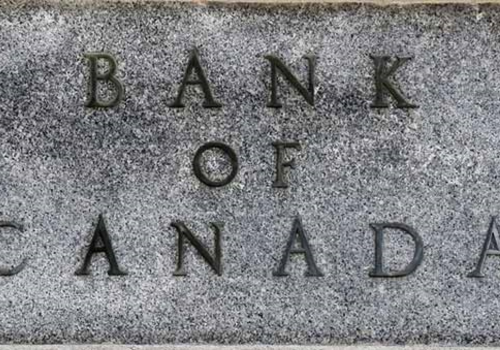





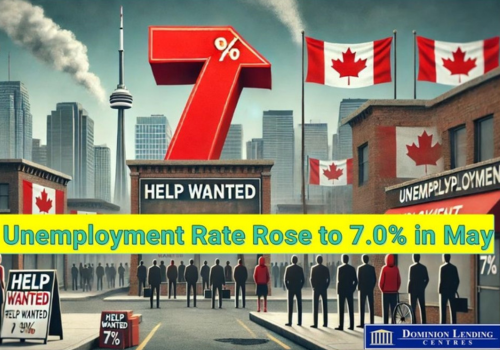
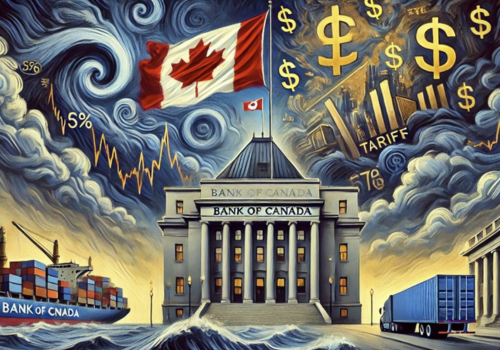


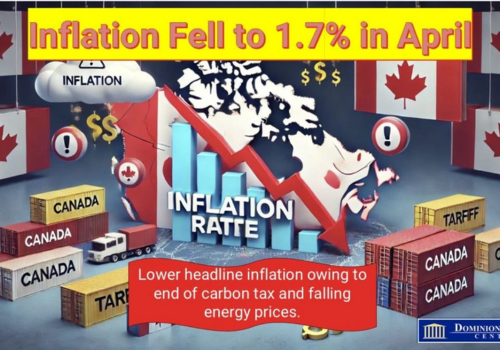


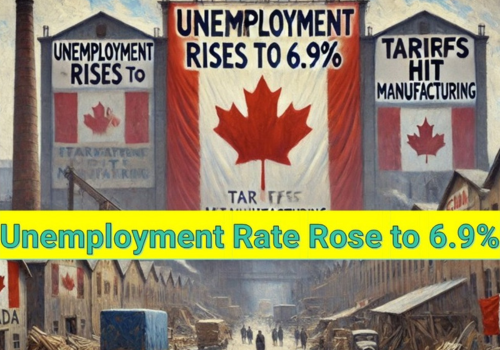

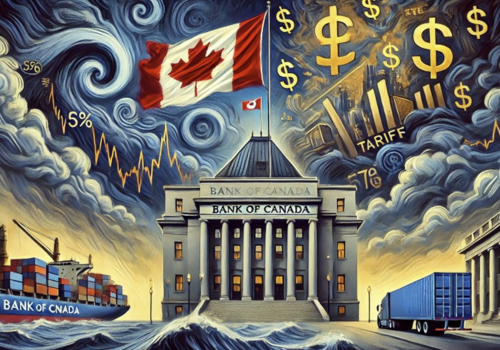
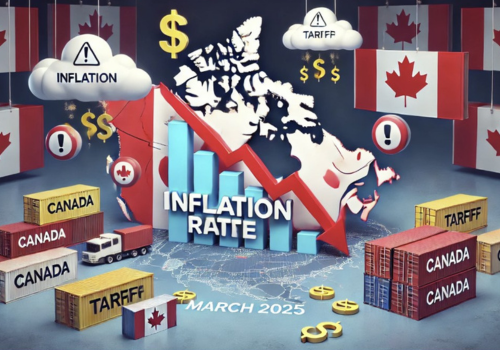

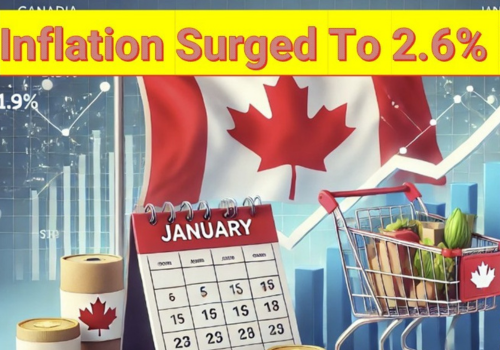






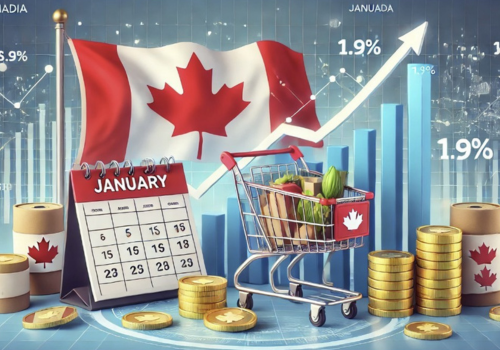




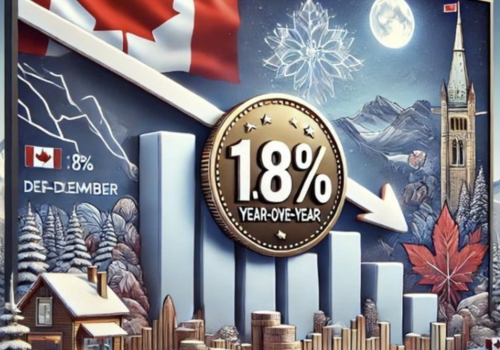









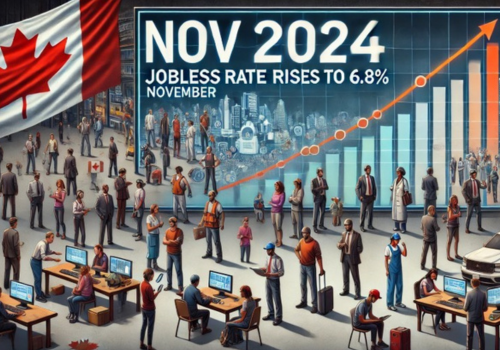


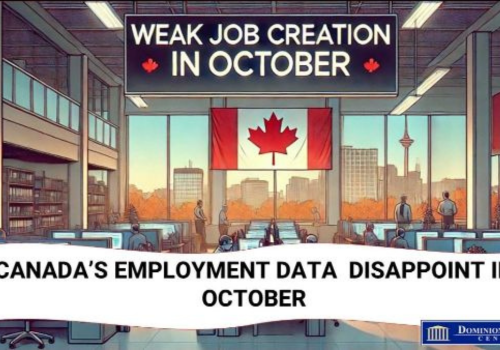


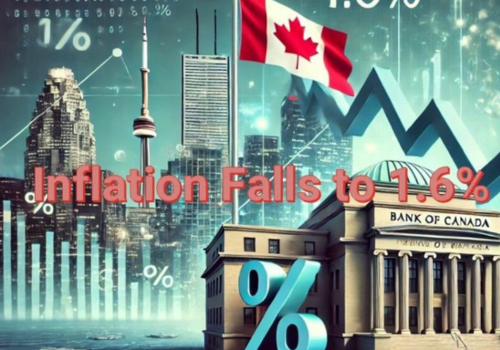

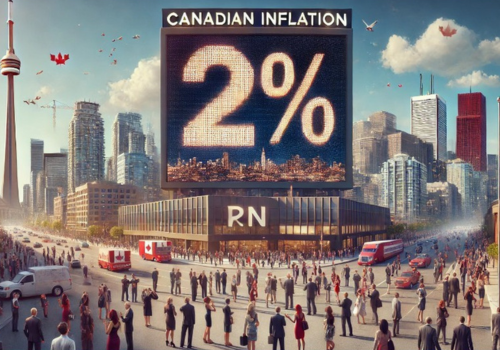

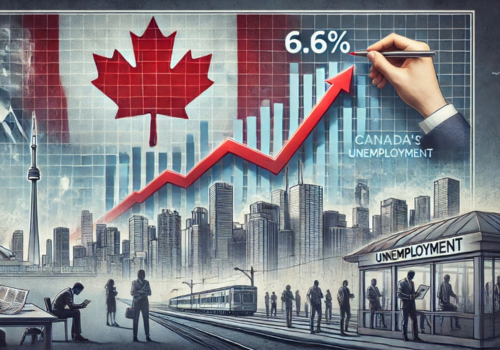

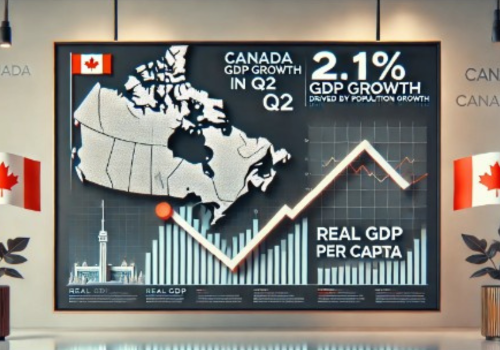


 as of November 7 2023 (500 x 350 px).png)
